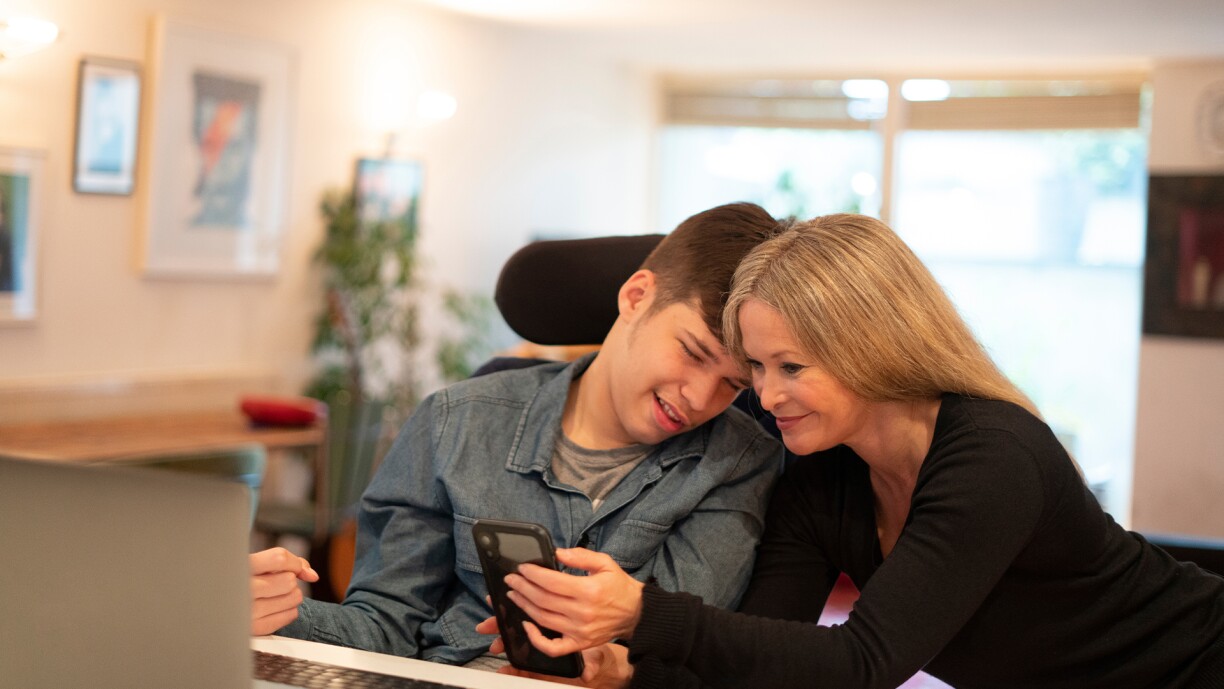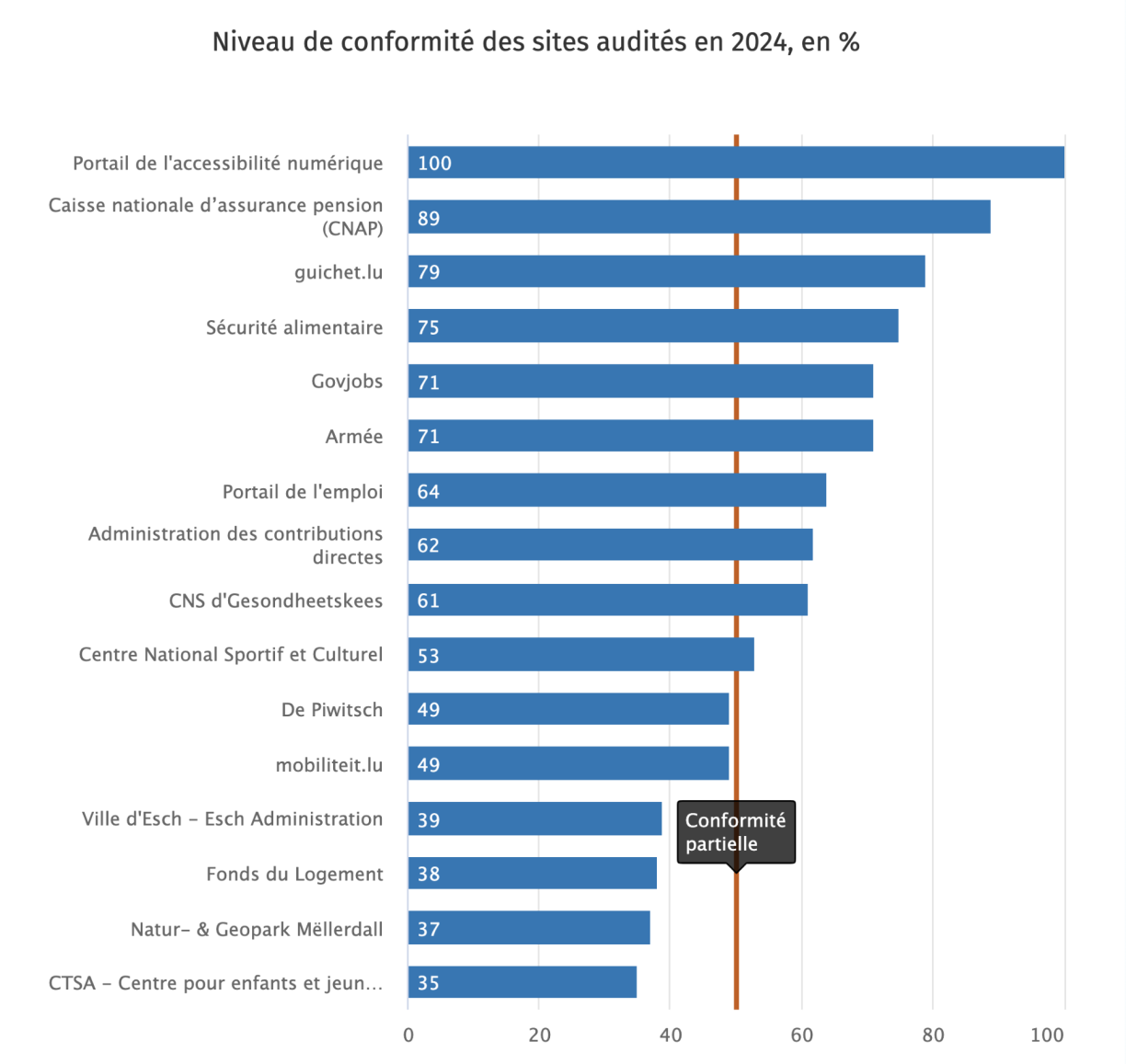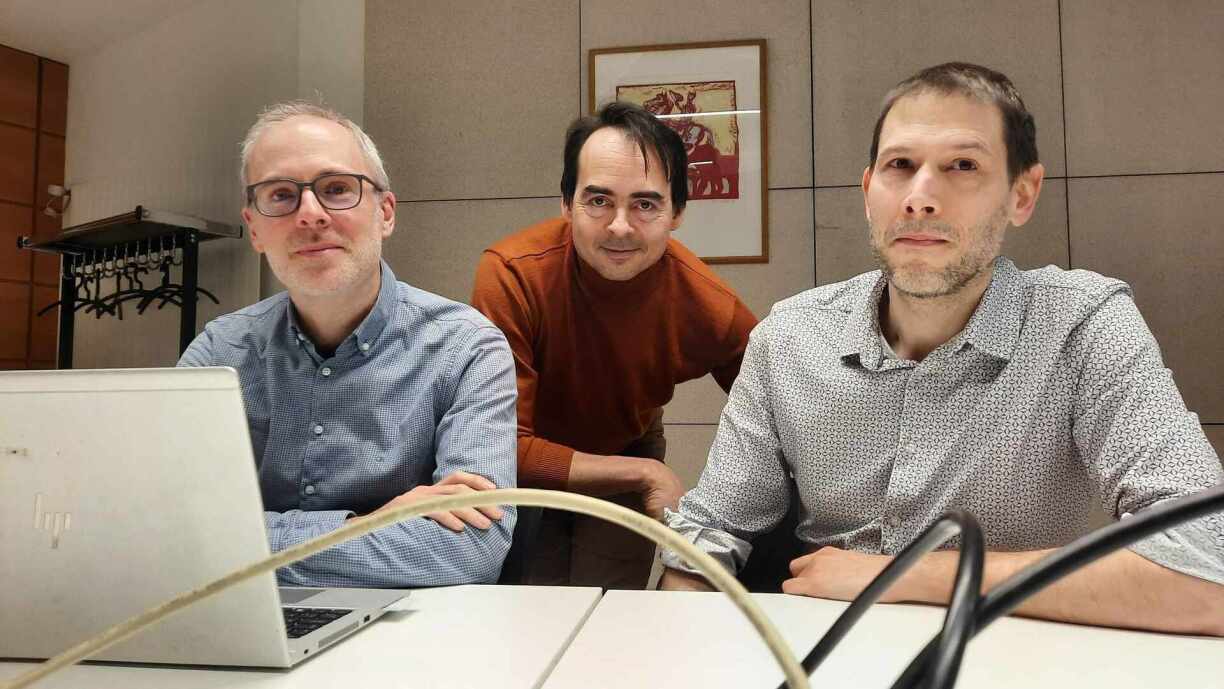
Imagine for a moment that your mobile phone or computer screen works perfectly well, but you can’t access all the information like everyone else. This may be due to being visually impaired, hearing-impaired, or to an inability to use your fingers. It could also simply be age-related.
The website or mobile application of the public service you’re visiting may be fully legible for your neighbor, but not for you – despite having assistive technology, like a voice reader – because the designers didn’t prioritise accessibility for users with disabilities, whether minor or major, from the start.
In practice, this results in a menu bar that cannot be read by a screen reader and is therefore inaccessible to the visually impaired. In other words, the web page is badly structured, such that some of the information is lost to people with disabilities. Another typical example of this is the inaccessibility of PDFs, as is the case on most public web pages.
Alain Vagner, expert in digital accessibility at the Information and Press Service (SIP) of the Luxembourg Ministry of State, explains that accidents can occur at any moment, thus, any individual with a short-term or long-term disability will appreciate having access to digital services for their job or daily life. This should include their ability to plan a trip via mobiliteit.lu, find job vacancies in Luxembourg via govjobs.lu, take care of all their administrative formalities via guichet.lu, or take care of health-related formalities via CNS.lu, for example.

Francis Kaell of the Open Data and Access to Information division at the SIP indicates that an estimated 15% of the population in Luxembourg has a disability, which lack access to state, municipal, and general public sector websites and apps.
Based in offices overlooking the Place de la Constitution in the heart of Luxembourg City, the unit’s remit is to monitor the accessibility of public websites and mobile applications and to push public services to make their digital platforms usable for all, as required by law on digital accessibility, introduced in May 2019. After all, every citizen has the right to ask the public authorities for access to online information.
Solutions do exist, as Kaell explains that a combination of technical work and communication can help give access to people with disabilities. Dominique Nauroy, expert in digital accessibility, provides the example of making a page audible in different languages, detailing how it may be achieved by adding language attributes to the HTML code of the web page. However, the experts at the SIP have their work cut out for them, as the country has almost 900 public service websites and apps, and only one of them is currently 100% compliant with the digital accessibility requirements laid down by law.
In France, a number of public websites are already 100% accessible, including those of the French Public Service, the French Office of Immigration and Integration, and the town of Angoulême, capital of the comic strip industry. In Luxembourg, there are fewer ‘ideal’ examples, but on the whole, public services are more concerned about doing better. Nauroy explains optimistically that the sites that they audit have improved their overall compliance score year after year.
To assess improvements, the SIP unit carries out more than a hundred audits a year, and around fifteen sites are the target of an in-depth audit. The SIP consults partners that work with disabled people to select the most appropriate sites for audit. At the beginning of the year, the SIP team publishes the sample of sites to be audited the following year. This means that the sites have a year to improve before the examination.
In 2021, the average compliance rate for sites was around 44%. Nauroy draws a comparison between 2021 and last year, indicating that the compliance rate increased to an average of 61%. This is a sign that the public services are taking accessibility seriously, according to Nauroy.
61% compliance is good, but it’s a long way from the 100% required by law. However, it can be done, as the SIP has shown, without spending too much time on it. The Digital Accessibility Portal sets an example. It ticks all 136 compliance criteria and can now be seen, read, or heard by anyone, in its entirety.

Regardless of the audit’s outcome, it results in meetings between the managers of the website or app, the SIP, and an accessibility expert to assess the situation and plan next steps. However, as Kaell points out, progress isn’t always simple due to technical challenges, such as mandatory LuxTrust authentication, and developers of sites relying on external services that aren’t accessible have limited options for improvement.
Although this is a step in the right direction for website accessibility, progress is not yet being made in mobile applications, according to Nauroy. SIP has been monitoring apps since 2020, but no perceptible progress has been made. One of the reasons for this is that developing an application so that it is accessible is more complex than developing a website due to technological differences. A further degree of complexity is added by the fact that developers have to create one application for Android and another for iOS, often coded in different languages, explains Dominique Nauroy.
Vagner points out that there is much interest in the approach, with different public administrations emulating each other. He mentions the examples of the respective websites of the Chamber and the City of Luxembourg, which have invested in accessibility and have expressed interest in pursuing this approach to reach a higher ranking in digital accessibility.

Behind the scenes, the SIP is working on the creation of an Accessibility Observatory to highlight the efforts made by public administrations and make their audits available to the public, which will of course be verified by SIP experts. Kaell confides that there is a draft of the Observatory, before announcing that it will see the light of day this year. Its creation should help to raise awareness among public sector stakeholders, fuelling a dynamic as audits are carried out, according to Kaell.
Digital accessibility is a step forward for everyone, including for those who are not disabled today, but for when they are older, points out Alain Vagner. Kaell concludes by emphasising that their job is to ensure that they do better in the virtual world to overcome obstacles in comparison to the real world.